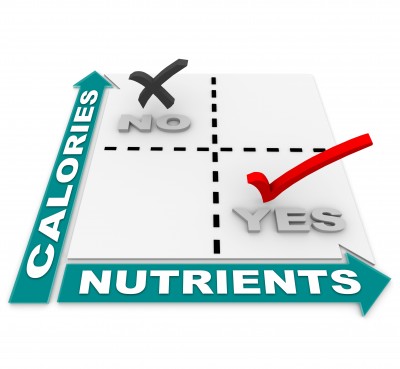Calories: The Truth and Nothin’ but the Truth
 What is a calorie exactly?
What is a calorie exactly?
Calories are a measurement of energy. Technically speaking, 1 kilocalorie, or kcal, or Cal is the amount of energy required to heat one gram of water by 1 degree celcius. Not very helpful for your health or weight management? We didn’t really think so ether. Lets try an analogy, just imagine a calorie as a drop of race car fuel and you as the race car. The more calories you have per fill-up, the more energy you have to power your body. Our bodies are burning calories all the time, when we are sleeping, sitting, driving to work, exercising, we are burning some calories no matter what we do. Our bodies require a certain amount of calories just to maintain our tissues and organs even if we were to lay in bed all day and not move at all. This minimum number of calories is called our Basal Metabolic Rate, or BMR. In addition to this, all of the movement we do during the day increases the amount of energy and calories that we will need to maintain our bodyweight. The more you move, the more you burn.
Unlike the race car, we are actually able to overfill our tank. If we consistently consume more calories than we are burning, we will gain body fat. Body fat was essential to our human ancestors who sometimes went long periods of time with no food at all, and is simply stored energy that is there waiting for us to use. All we need to do is chose to burn more calories that we consume, and we will burn this stored energy and use up our bodyfat. Sounds pretty good right? This is the only secret to weight management!
Most weight loss products and plans on the market work on this one principal and are likely reducing total calories in one way or another. Avoid diets that exclude or emphasize certain food groups. For example a “low carb”, or “zero fat”, “cabbage soup diet” or “high protein”. Our bodies need all of these things in order to stay healthy, and when working to burn body fat, it is important to maintain a balanced diet.
Calorie Density and Nutrient Density
Two considerations for reducing calories in a heathy way are calorie density and nutrient density. Calorie density means how many calories for a given amount, like calories per gram for example, that is often listed on the nutrition label. Nutrient density is like the nutritional “bang for your buck”. A good analogy for this is the old joke/riddle “What weighs more, a lb. of bricks, or a lb. of feathers?” Of course they weight the same. Just like one calorie coming from a cake is equal to one calorie coming from fish. Thus, there are no fattening foods! Just foods with more or less calories, and more or less nutrition per serving. Lets compare a low-nutrient 300 calorie bag of chips to Popeye’s favorite high nutrient food, spinach. You could eat almost 43 cups of spinach for the same 300 calories! It’s all about getting the most nutrition for the calories you eat. Fats contain 9 calories per gram, protein and carbohydrates both contain 4 calories per gram, and alcohol contains 7 calories per gram. It’s not necessary to count calories in order to burn body fat, just to choose foods that are less processed and more nutritious and you will automatically be cutting calories.
Processed foods generally have much of the healthy micronutrients like vitamins, minerals, and fiber removed in the processing that is often done to increase shelf life, increase profit for the manufacturer, or to make a food look, taste, or smell different than it does naturally. High nutrient foods are those that are unprocessed and have their full, natural nutritional value. These foods are often more filling and satisfying too. To reduce calories, choose whole foods that you enjoy eating that are in their natural form such as whole plant foods like fruits and vegetables, nuts and seeds, whole grains, and natural animal products.
To increase how many calories our body burns, we can simply increase our movement and work on physical fitness. Choose activities that you really enjoy doing to help you burn more calories. Just be sure to increase your activity in a safe way to avoid injuries.
Tips to Reduce Calories:
- If you are thirsty, drink water, it has zero calories.
- Read and understand nutrition labels and food claims.
- Stay well hydrated to avoid cravings.
- Focus on having fruits and vegetables as the main part of your meal.
- Get a good nights sleep, low energy can cause increased hunger.
- Choose whole foods, not packaged processed foods.
- Use a smaller plate.
- Measure your food rather than just pouring away or snacking from the package.
- Choose a salad instead of fries, potato salad, or another high calorie side.
- Eat slowly so you can feel your fullness and wait to have seconds.
- Eat small amounts of food often to stay satisfied and avoid being overly hungry.
- Leave the cheese off.
- Skip deserts! Try substitutions like greek yogurt and frozen berries instead of ice cream.
- Plan what you are going to eat and stick with it.
- When eating out, leave some food on the plate to take home for later.
- Come up with your own ideas!
Tops to Increase Calorie Burning:
- Take walks on breaks or after work.
- Get simple exercise equipment like a ball to use for exercise while you watch TV.
- Use your weekends to be extra active doing something you enjoy.
- Take the stairs whenever you can.
- Clean up around the house or in the yard.
- Change your workouts often to avoid plateaus and boredom.
- Short on time? Split up your exercise into 2 or 3 sessions, the calorie burn is the same.
- Drink cold water and listen to music to make exercise feel easier.
- Include resistance training in your workout to increase your burn after a workout.
- Include your favorite cardio exercise to burn instant calories.
- Stretching burns calories, helps improve workouts, and can reduce injuries.
- Try something new!
Tried everything? If you’re ready for assistance with calorie balance, browse our Merchant Directory to seek the help of a nutrition, fitness, or weight management expert.
Author: Tony Montijo, BS Kinesiology, CPT, CES






